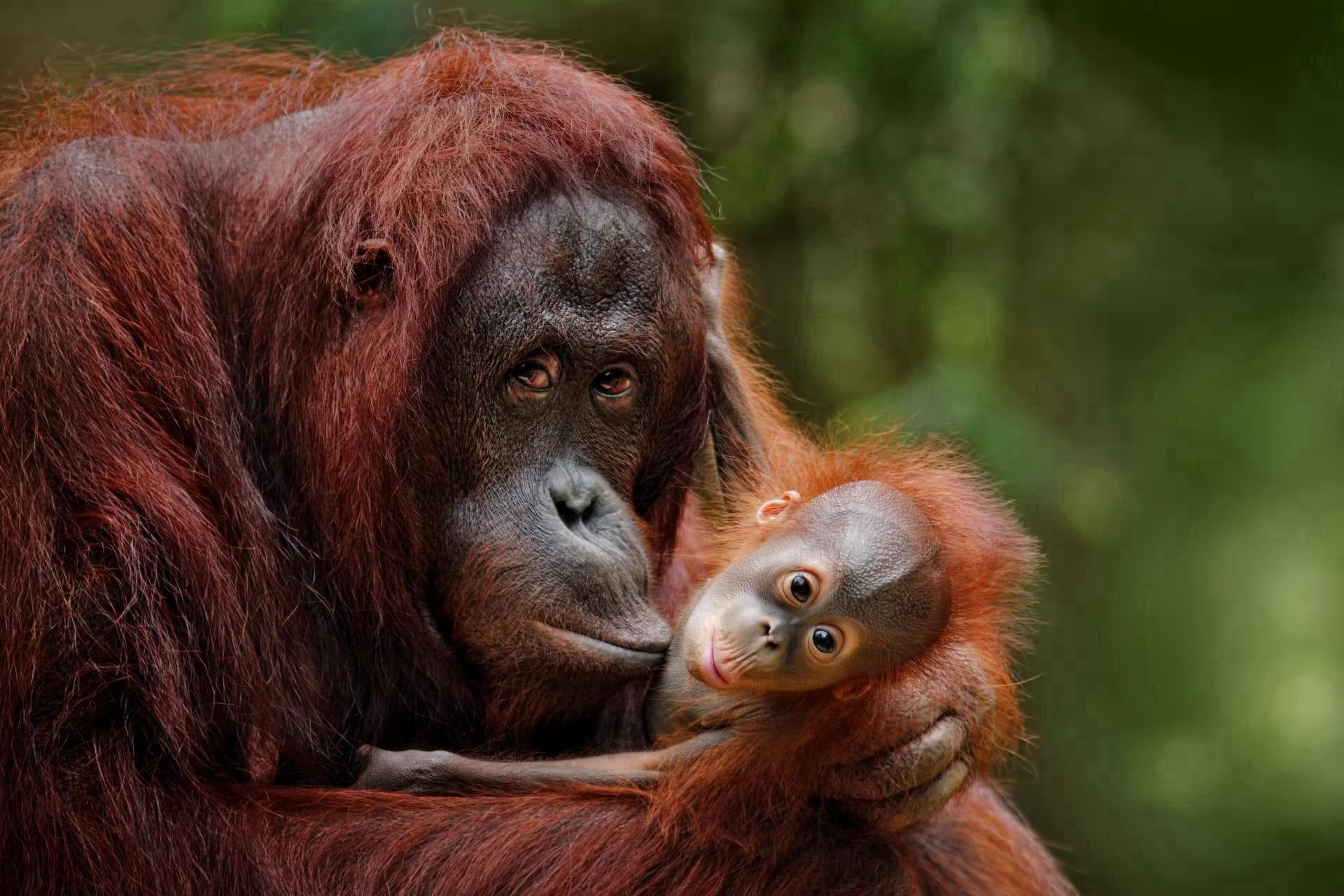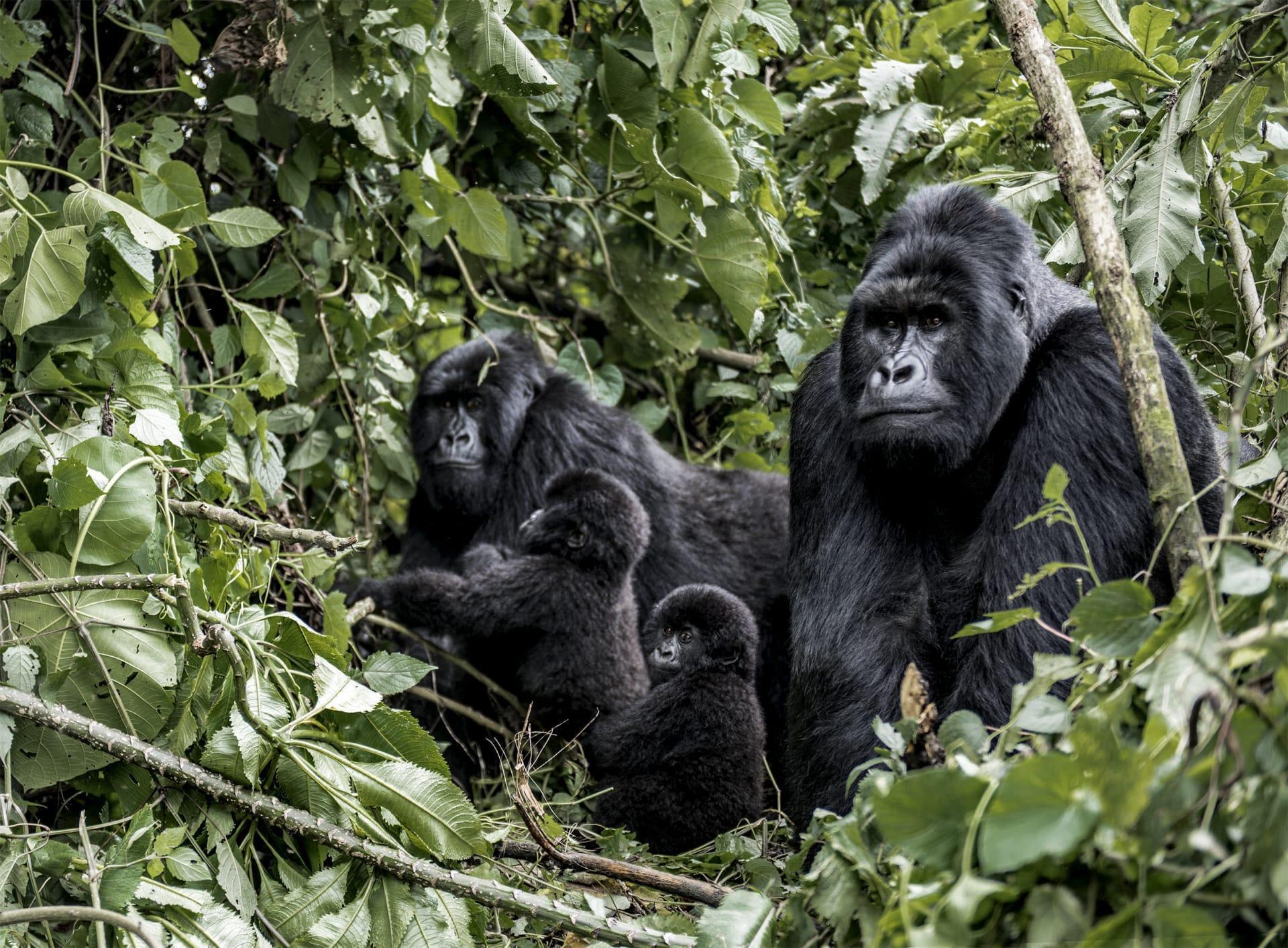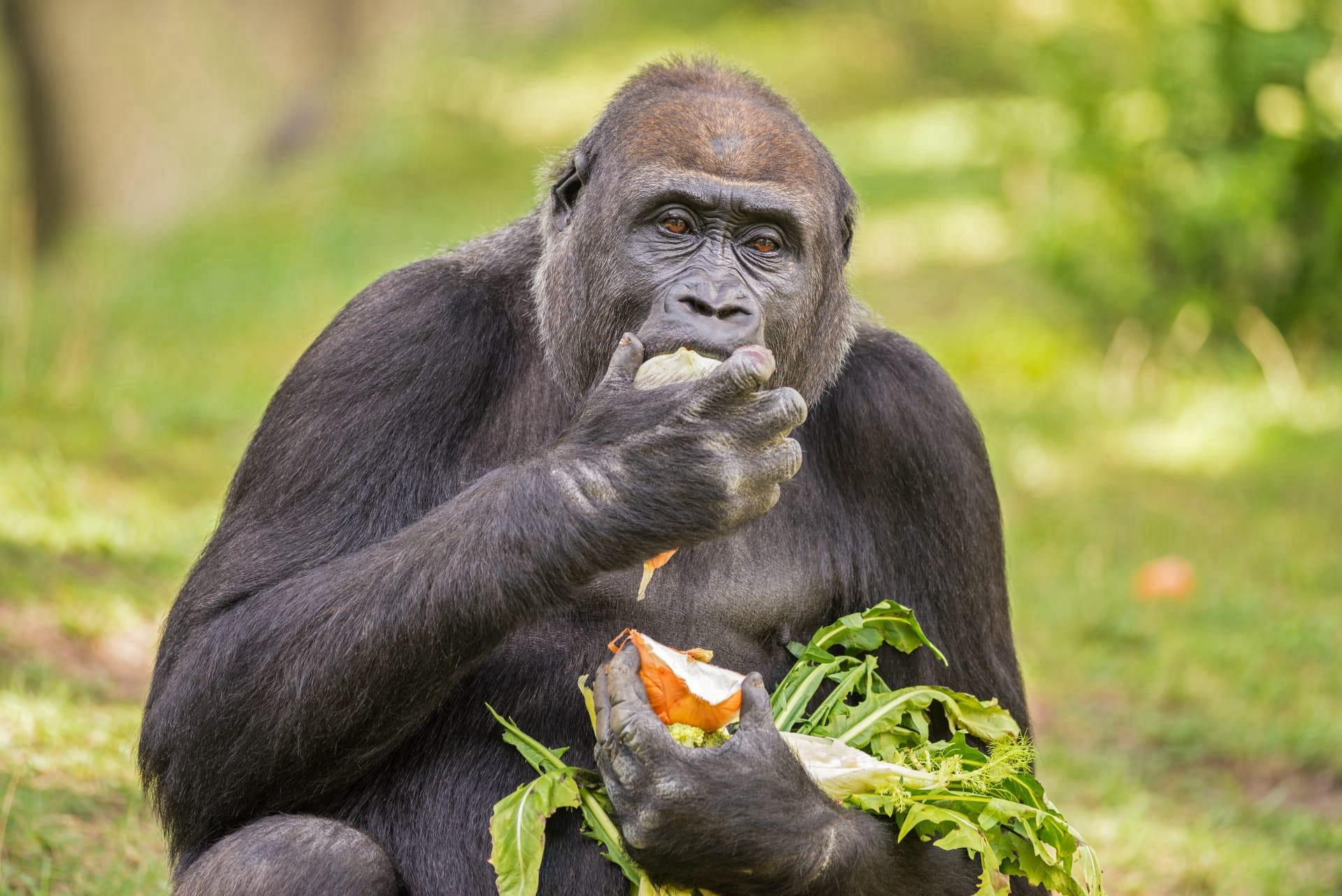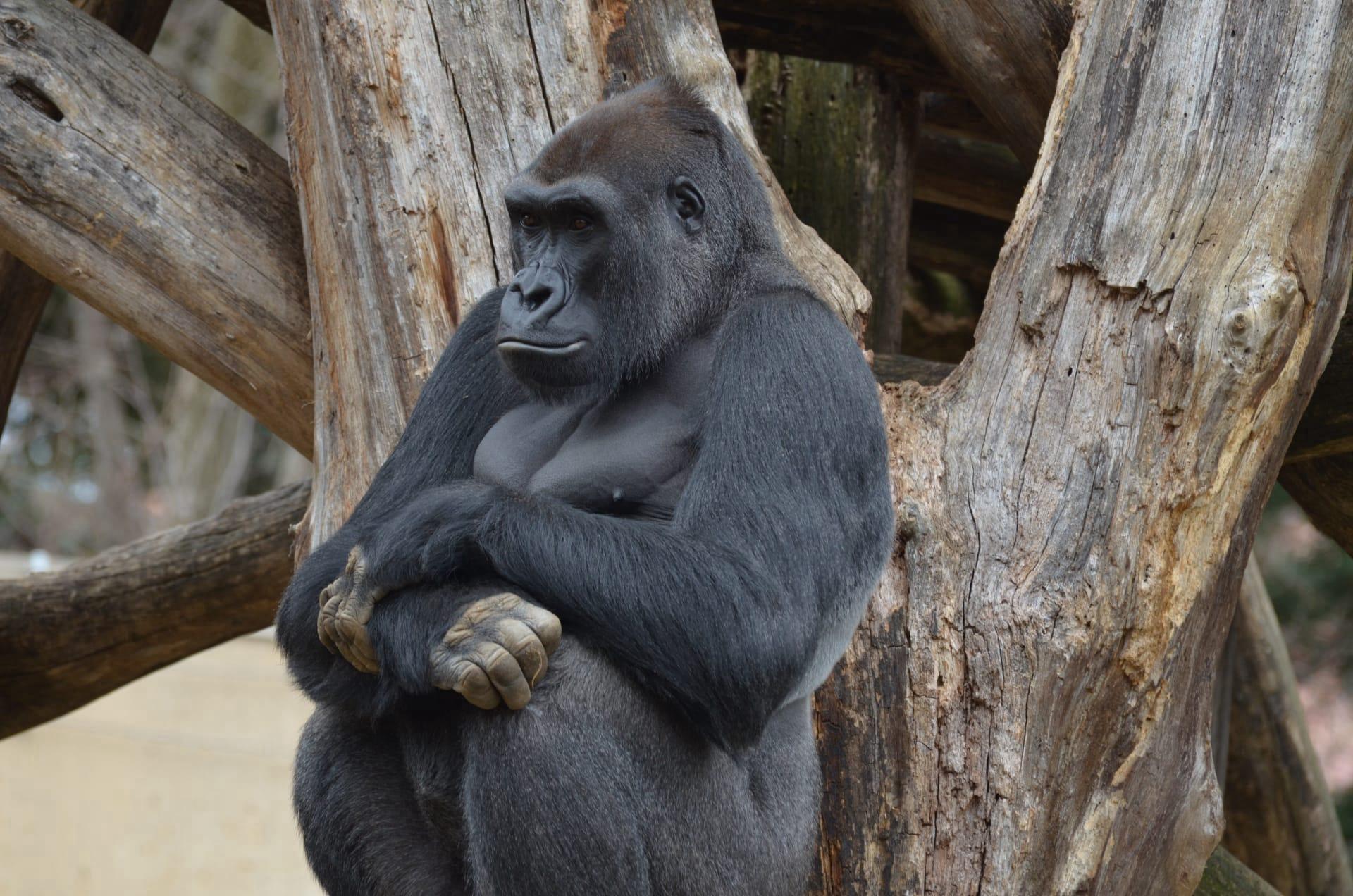Gorilla
- Home /
- Mini Encyclopedia /
- Animal /
- Gorilla
1
Gorillas, intriguing primates with gentle eyes and immense strength, belong to the genus Gorilla, which is divided into two species: the Eastern Gorilla and the Western Gorilla. Each of these species is further subdivided into two subspecies. The Eastern Gorilla comprises the Mountain Gorilla and the Eastern Lowland Gorilla, known for their thicker fur, which is an adaptation to their colder mountainous habitats. On the other hand, the Western Gorilla, which includes the Western Lowland Gorilla and the Cross River Gorilla, typically inhabits more lowland tropical forests and is distinguished by a slightly smaller size and different facial characteristics.
Gorillas have a wide but patchy distribution in the dense forests of central Africa. The Eastern Gorillas primarily reside in the mountainous forests of eastern Democratic Republic of Congo, Rwanda, and Uganda. The Western Lowland Gorillas are more widespread, found in several countries across central and western Africa including Gabon, Republic of Congo, Cameroon, Central African Republic, and Angola. The Cross River Gorillas, however, are the rarest, with a distribution limited to the border region between Nigeria and Cameroon. Their habitats range from lowland swamps to montane forests, demonstrating a remarkable adaptability to varied ecological conditions.

2
Question: Are gorillas aggressive and dangerous to humans?
Answer: Contrary to popular belief, gorillas are generally calm and nonaggressive unless threatened or disturbed. While their size and strength could potentially make them dangerous, gorillas are naturally shy and reserved animals. They display aggression primarily as a defense mechanism or when establishing dominance within their group. Aggressive behaviors may include loud hoots, mock charges, and chest beating. Human-gorilla conflicts are extremely rare, and in the wild, gorillas would more likely retreat than attack when encountering humans.

3
Gorillas exhibit fascinating survival strategies that are key to their existence in the wild. They are predominantly herbivorous, feeding on a variety of plant species which includes leaves, stems, fruits, and occasionally insects. This varied diet is crucial for their survival as it ensures they receive the necessary nutrients while also adapting to seasonal changes in food availability. Gorillas live in groups, usually led by a dominant male known as a silverback. This social structure provides protection and plays a critical role in foraging. The silverback makes decisions about group movements, foraging sites, and resting places, ensuring the safety and well-being of the group.
Communication is another vital survival strategy for gorillas. They use a range of vocalizations, body postures, and facial expressions to convey emotions and intentions. This communication is essential for maintaining group cohesion and hierarchy, and for coordinating activities such as foraging and traveling. Additionally, gorillas are known for their intelligence and problem-solving abilities, which they demonstrate through tool use and complex social interactions. These behaviors not only aid their survival but also reflect their adaptability to different environmental challenges.

4
In their natural habitats, gorillas play a crucial role in maintaining the balance of the ecosystem. Their feeding habits significantly influence the vegetation structure and density, as they help in seed dispersal through their consumption of various fruits and plants. This process aids in plant regeneration and contributes to the overall health of the forest ecosystem. Furthermore, as large frugivores, gorillas are key in controlling certain plant populations, ensuring ecological diversity.
The presence of gorillas also has a broader ecological impact, as they are an umbrella species. Protecting gorillas and their habitats indirectly benefits a wide range of other species that share the same environment. Conservation efforts aimed at gorillas help preserve entire forest ecosystems, which are vital for regional climate regulation and carbon sequestration. Additionally, gorillas attract ecotourism, which not only raises awareness about conservation but also provides economic benefits to local communities, fostering a symbiotic relationship between wildlife preservation and community development.

5
Film: "Virunga" (2014, USA) is an acclaimed documentary set in the Virunga National Park in the Democratic Republic of Congo. It focuses on the conservation work of park rangers, including their efforts to protect the endangered mountain gorillas amidst political turmoil and armed conflict. The film provides a powerful insight into the challenges of conservation and the extraordinary bond between humans and gorillas.
Book: "Gorillas in the Mist" (1983, USA) by Dian Fossey is a groundbreaking work that offers an in-depth look at the life of mountain gorillas in Rwanda. Fossey's extensive research and close encounters with these primates provide a detailed account of their behavior, social structures, and the threats they face.
Book: "The Last Great Ape: A Journey Through Africa and a Fight for the Heart of the Continent" (2011, USA) by Ofir Drori and David McDannald. This book explores the illegal wildlife trade in Africa, including the plight of gorillas. It combines adventure, detective work, and conservation, highlighting the urgent need for protection of gorillas and other endangered species in the wild.